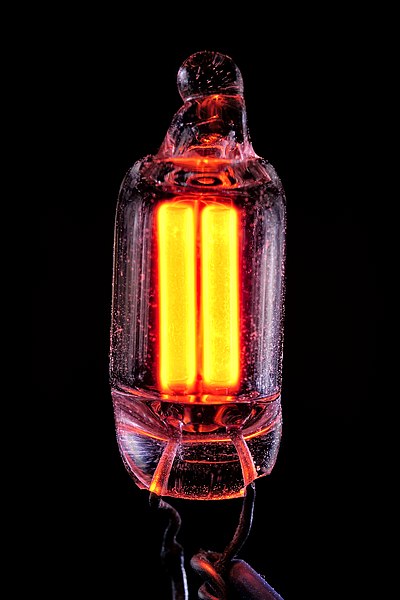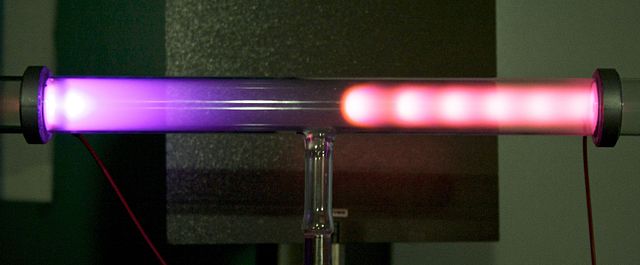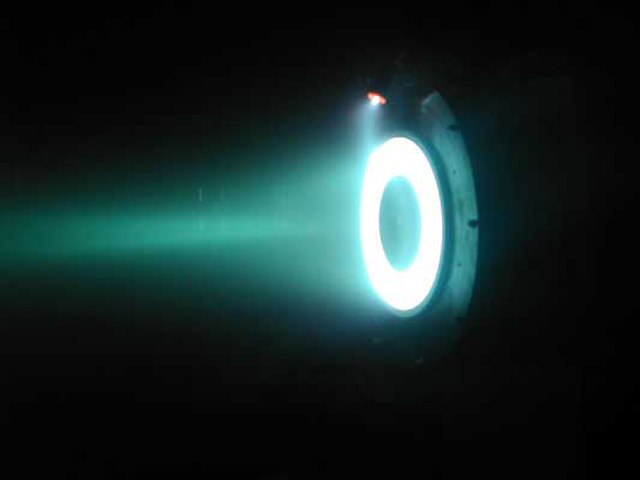A glow discharge is a plasma formed by the passage of electric current through a gas. It is often created by applying a voltage between two electrodes in a glass tube containing a low-pressure gas. When the voltage exceeds a value called the striking voltage, the gas ionization becomes self-sustaining, and the tube glows with a colored light. The color depends on the gas used.
NE-2 type neon lamp powered by alternating current
DC powered neon lamp, showing glow discharge surrounding only the cathode
A 5651 voltage-regulator tube in operation
Image: Glow discharge regions
Plasma is one of four fundamental states of matter characterized by the presence of a significant portion of charged particles in any combination of ions or electrons. It is the most abundant form of ordinary matter in the universe, mostly in stars, but also dominating the rarefied intracluster medium and intergalactic medium.
Plasma can be artificially generated, for example, by heating a neutral gas or subjecting it to a strong electromagnetic field.
Lightning as an example of plasma present at Earth's surface: Typically, lightning discharges 30 kiloamperes at up to 100 megavolts, and emits radio waves, light, X- and even gamma rays. Plasma temperatures can approach 30000 K and electron densities may exceed 1024 m−3.
Artificial plasma produced in air by a Jacob's Ladder
Hall-effect thruster
Plasma spraying








